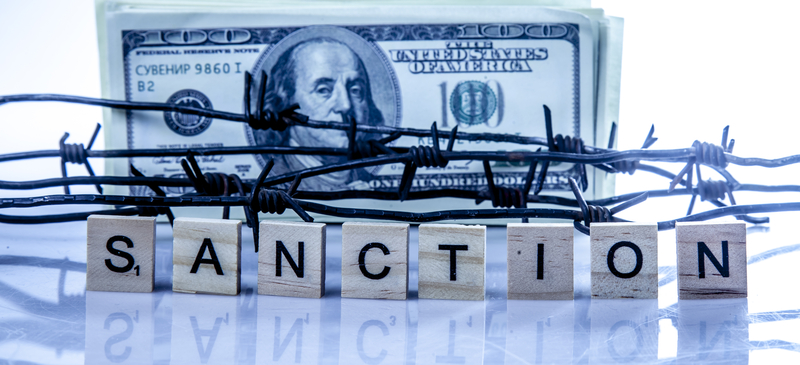The Workers’ Compensation Appeals Board threatened to sanction an applicant’s attorney and a hearing representative up to $20,000 apiece for filing petitions for reconsideration with the intent to “disrupt or delay” WCAB proceedings.
The board issued an en banc decision in the case of Ledezma v. Kareem Cart Commissary and Mfg., 89 Cal. Comp case, 4/10/24.
The en banc panel of commissioners wrote that they were issuing a notice of sanctions and costs on 8 consolidated cases. They warned of notice of intent to issue sanctions totaling up to $20,000 against attorney Susan Garrett, and another notice of intent to sanction hearing representative Lance Garrett for up to $20,000. The Garretts have until May 5 to file responses in the 8 cases.
The decision also warned of reasonable expenses, attorney fees, and costs against both of the Garretts.
What does that mean? It means that there will most likely be a subsequent en banc decision on the matter, meaning that it isn’t final yet.
Your humble blogger predicts that both Garretts will file responses in the eight cases.
But regardless of what happens in the next en banc decision, the WCAB’s motivation here is crystal clear – they are punishing the filing of petitions for reconsideration to prevent matters from proceeding to trial.
The board was troubled by this because:
- A petition for removal is the appropriate petition to dispute a case being set for trial. Instead, a petition for reconsideration was filed in each of the eight cases.
- The Garretts “waited until the day of trial to file petitions for reconsideration in lieu of appearing for trial and to prevent the matters from proceeding …”
- The WCAB believes that the Garretts filed the petitions “solely to delay the trial proceedings in each case …”
- The WCAB commissioners noted that the Garretts could have acted sooner to request a continuance of the trial date, but did not.
Keep in mind, that is all commentary by the WCAB commissioners on p. 16 of the en banc decision. The Garretts have the right to dispute that if they want to in their subsequent pleadings.
TAKEAWAYS
While there are many takeaways from this decision, the most important points a practitioner can learn from this decision are:
- To take care to accurately label ones petitions’ as “petitions for removal” or “petitions for reconsideration.”
- If one cannot make a trial date for any reason, the practitioner would be well-served to immediately inform the WCAB as soon as that is apparent. If one is disputing a case being set for trial, a timely petition for removal would be more appropriate.
The differences between petitions for removal and petitions for reconsideration may seem confusing, but they don’t have to be. The board explained that:
- A petition for removal is a petition disputing a non-final order, such as a discovery order, or a decision by an MSC judge to set a case for trial. (These are called interlocutory orders.)
- A petition for removal disputes a final award, such as a Findings and Award on all issues in a case in chief.
However, sometimes these two categories do overlap in “hybrid” decisions. The commissioners explained that when genuine confusion occurs due to a hybrid decision, it is ok to file a petition for removal and alternatively plead it as a petition for reconsideration. (Page 15 of the en banc decision lists the following example: A hybrid decision could be one that finds industrial injury, but orders more development of the evidentiary record. In that case, a petition for removal that also alternatively pleads itself as a petition for reconsideration could be appropriate.)
The WCAB repeatedly explains in the en banc decision that petitions for reconsideration stop a case in its track and prevent further movement on the case. For that reason, they do not want parties filing petitions for reconsideration when a petition for reconsideration is inappropriate.
LOOKING FORWARD
This story has not reached its conclusion yet. Your humble blogger anticipates that the Garretts will file timely responses, and the WCAB will issue a new decision on this matter in the next few months.
All parties would be wise to hear the message being broadcast by the WCAB’s en banc megaphone – take care to know the difference between a petition for removal and a petition for reconsideration, and only file these petitions when appropriate. If any party files frivolous petitions, the WCAB can sanction that party in addition to potentially ordering costs, attorney fees, and reasonable expenses.
All of those things are an expensive problem to have. As is evidenced by the Earley decision, the WCAB already has a backlog of cases and wants to deter any unnecessary filings. By invoking its power to issue sanctions and costs, the WCAB is putting its ability to deter unnecessary filings on full display.
Got a question about workers’ compensation defense issues? Feel free to contact John P. Kamin or Louis A. Larres. Mr. Kamin is a workers’ compensation defense attorney and equity partner at Bradford & Barthel’s Woodland Hills location, where he monitors the recent legislative affairs as the firm’s Director of the Editorial Board. Mr. Kamin previously worked as a journalist for WorkCompCentral, where he reported on work-related injuries in all 50 states. Please feel free to contact John at jkamin@bradfordbarthel.com or at (818) 654-0411.
Louis A. Larres is a partner and area managing attorney at Bradford and Barthel’s Fresno office, and the director of the firm’s Appellate Division. Please feel free to contact Louis at llarres@bradfordbarthel.com or at (559) 221-6500.
Viewing this website does not form an attorney/client relationship between you and Bradford & Barthel, LLP or any of its attorneys. This website is for informational purposes only and does not contain legal advice. Please do not act or refrain from acting based on anything you read on this site. This document is not a substitute for legal advice and may not address every factual scenario. If you have a legal question, we encourage you to contact your favorite Bradford & Barthel, LLP attorney to discuss the legal issues applicable to your unique case. No website is entirely secure, so please be cautious with information provided through the contact form or email. Do not assume confidentiality exists in anything you send through this website or email, until an attorney/client relationship is formed.




